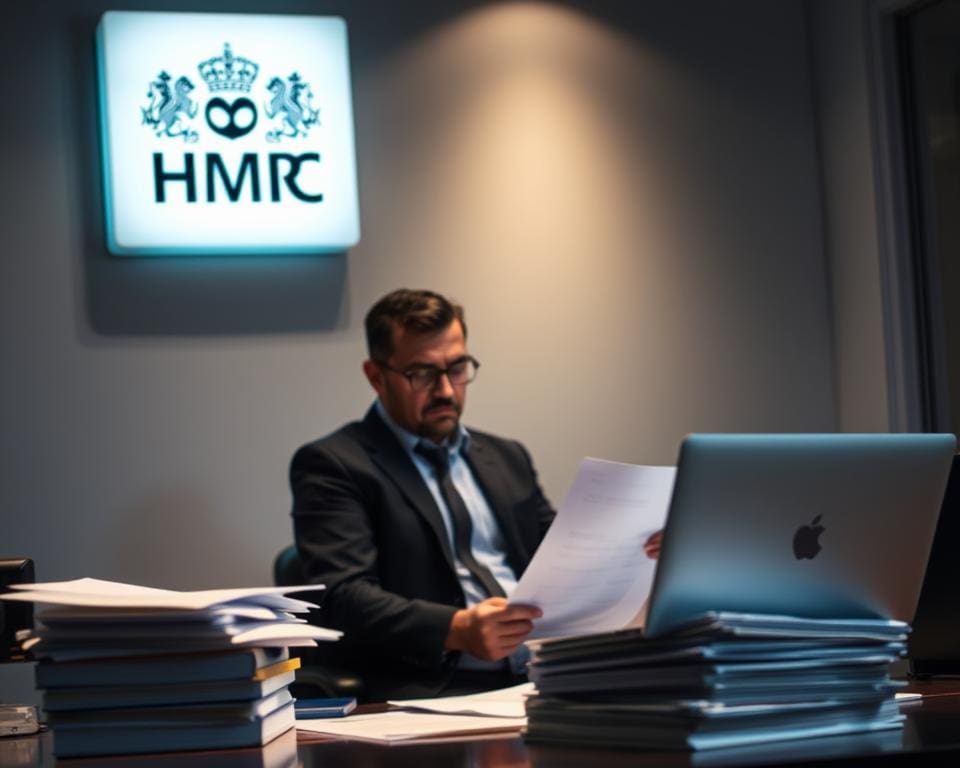Closing a business with HMRC is a significant decision that requires a thorough understanding of the processes involved. For those navigating the complexities of closing a business in the UK, knowing the steps to close a business legally is essential to ensure compliance and to avoid penalties. This section aims to inspire business owners to approach the HMRC closure process with confidence, providing clarity on the necessary actions to take.
Understanding the HMRC Closure Process
Closing a business in the UK can be a daunting task, entailing a series of specific steps and obligations. The HMRC closure process plays a crucial role in this journey, providing guidelines that help ensure a smooth transition from active operations to formal closure. Familiarity with the fundamental principles behind this process can significantly aid business owners in navigating the complexities involved.
What Does Closing a Business Entail?
When considering the closure of your business, various aspects need attention. This includes filing the necessary documentation with HMRC and settling any outstanding tax liabilities. Proper management of these aspects contributes to an effective closure process. Business owners must also address employee matters, such as final pay and redundancy, alongside the creation of final accounts that reflect the business’s financial standing.
Key Terms in the HMRC Closure Process
To effectively navigate the HMRC closure process, understanding key terms in business closure is vital. Domestically, terms like “de-registration,” “liquidation,” and “final accounts” frequently emerge. De-registration refers to the process of formally removing your business from the VAT register, while liquidation signifies the winding down of a company’s affairs. Final accounts encapsulate a summary of financial transactions and the overall position of the business, providing essential insights into its closure status. Grasping these terms can empower business owners to manage the intricate landscape of closing a business in the UK with confidence.

How To Close A Business With HMRC
Closing a business with HMRC requires careful planning and adherence to specific procedures. Following the appropriate steps can ensure a smooth transition and minimise potential issues with tax authorities. Below is a comprehensive step-by-step guide to assist business owners in this essential process.
Step-by-Step Guide for Business Owners
- Notify HMRC: Inform HMRC of your intention to cease trading. This step is critical as it establishes your intent and helps start the official closure process.
- Settle Outstanding Liabilities: Ensure all taxes, including VAT and Corporation Tax, are paid. Managing these financial obligations is vital in closing a company with HMRC without complications.
- Finalise Your Accounts: Prepare and submit final accounts to HMRC. This documentation typically includes a balance sheet and profit and loss statement, detailing the financial position of your business before closure.
- File Relevant Forms: Complete and submit any required forms, including P45 for employees and form CT600 for Corporation Tax. This ensures compliance with the steps to close a business legally.
- Hold Final Meetings: For companies, it may be necessary to conduct final meetings with shareholders and directors to discuss the closure and make any essential decisions.
- Inform Customers and Suppliers: Communicate with customers and suppliers about the closure. This transparency helps maintain relationships and ensures proper arrangements for outstanding transactions.
VAT De-registration Process
The VAT de-registration process is a crucial aspect of winding up a business in the UK. Understanding the de-registration necessity can prevent complications and ensure compliance with tax obligations. Business owners must be aware of when de-registration is appropriate and how to effectively navigate the relevant paperwork.
When Is De-registration Necessary?
De-registration becomes necessary under several circumstances, such as when a business ceases trading or if the taxable turnover falls below the VAT threshold. Effectively recognising these situations can help business owners take the appropriate steps at the right time. It is essential to make this decision promptly to avoid unnecessary penalties.
How to Complete the De-registration Form
Completing the VAT de-registration form is a straightforward process if owners approach it methodically. Begin by gathering all required information, including the reason for de-registration and relevant financial data. This preparation facilitates a smoother submission. Follow these steps to ensure compliance:
- Download the VAT de-registration form from the HMRC website.
- Fill in all required sections accurately, ensuring clarity for the HMRC review.
- Provide any supporting documentation that may be necessary to substantiate the de-registration necessity.
- Submit the completed form to HMRC via the designated channels.
Understanding how to complete the VAT de-registration form properly will minimise errors and help avoid delays. This process is integral to finalising the closure of a business efficiently.
Corporation Tax Closure Requirements
Closing a business can be a complex process, especially when it comes to fulfilling corporation tax closure requirements. Business owners face specific closing a business obligations that must be addressed before finalising operations. Understanding these requirements is essential to ensure compliance with HMRC, avoid penalties, and manage tax responsibilities efficiently.
Your Obligations Before Closing
Before concluding any business activities, ensure that all outstanding tax obligations are settled. This includes:
- Clearing any unpaid corporation tax bills
- Preparing comprehensive financial statements
- Settling debts and ensuring all invoices are accounted for
Taking these steps helps pave the way for an effective corporation tax closure, promoting a smoother transition for both the business owner and HMRC.
Final Corporation Tax Returns
Submitting final corporation tax returns is a critical part of the closing process. This involves reporting any profits or losses and ensuring any tax due is accurately calculated. Keep the following in mind:
- Gather all financial records for the final period
- Prepare the final return within the stipulated timeframe
- Make necessary adjustments for any outstanding claims or payments
Completing final corporation tax returns correctly prevents future issues and provides clarity regarding leftover tax liabilities.
Dealing with Tax Liabilities
Managing tax liabilities should not be overlooked when closing a business. To handle this effectively:
- Consult with financial or tax advisors for informed strategies
- Assess any potential tax relief options available
- Communicate proactively with HMRC regarding issues or uncertainties
By addressing these tax concerns, business owners can ensure a responsible closure process and uphold their obligations through smooth corporation tax closure.
Business Closure Notification to HMRC
Notifying HMRC of business closure is an essential final step for any business owner. This formal communication marks the end of your business journey and is crucial for ensuring that all regulatory obligations are met. Thoroughly informing HMRC helps prevent potential misunderstandings or delays in your closure’s processing, ultimately safeguarding the integrity of your business’s financial records.
When considering compliance in business closure, it is vital to use the correct methods to notify HMRC. Options may include sending written correspondence, completing relevant online forms, or engaging with professional accountants. Each method requires accuracy to ensure that all necessary information is conveyed in a clear and timely manner, thereby avoiding complications that might arise post-closure.
Accurate completion of the business closure notification to HMRC ensures that your obligations are satisfied. By taking this pivotal step, you not only fulfil legal requirements but also pave the way for any future ventures you may embark upon. Transition gracefully from one chapter to the next by understanding the importance of this notification, allowing closure to be both orderly and compliant.









